I’ve been thinking a lot these past few weeks about standards based instruction and writing IEP goals. I’ve been working on a presentation to help teachers and their IEP team teach based on the grade level standards. Most (if not all) states require standards based instruction be identified in the measurable IEP goals. As a special education teacher, we evaluate our students based on the grade-level standards, even the students taking the alternate assessment instead of the typical standards-based assessment. So, how do we keep what we implement in our classroom instruction relevant to the lives of most of our students? How do we make our teaching meaningful and functional for student’s needs who are not college bound. For those special education students who will need significant support after school, how do we help them use the information from a given subject daily?
I know many of you struggle with this when it comes to writing IEP goals that are meaningful for a student’s progress and some states provide more support than others in terms of helping you write measurable annual goals. And there are probably times when we all have to take the path of teaching a skill BECAUSE it’s related to the set of standard instead of because of the child’s needs. Wouldn’t it be great, though, if most of our instruction could have meaning in the real-world for our students and still meet our state requirements? Wouldn’t it be amazing if what we spent most of our time teaching skills the students will use when they leave us…whether they are 5, 15, or 21? I thought it would be good to talk about some best practices of different things you can do to help this happen.
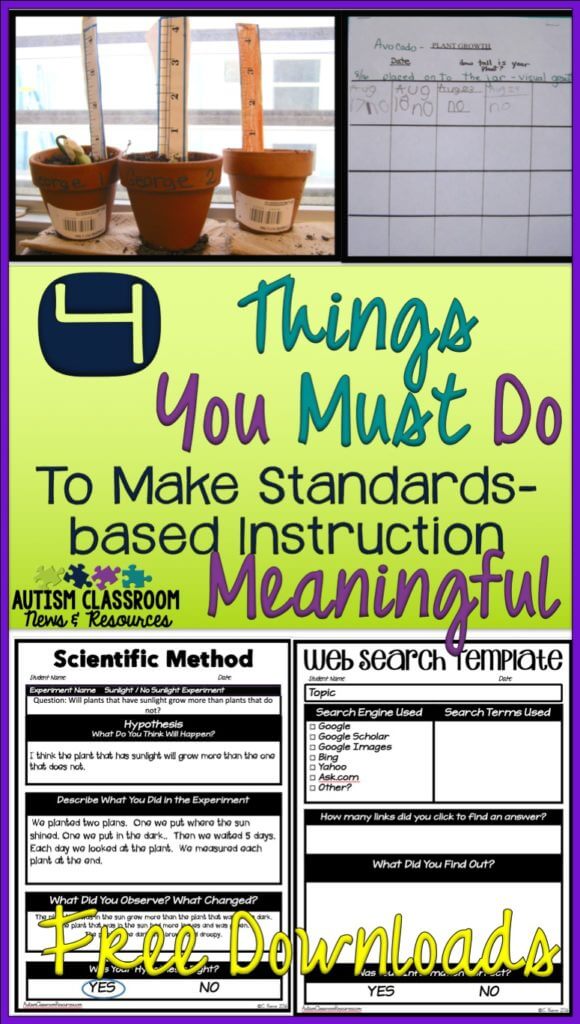 1. Don’t Write the Standard as the Goal (or Objective)
1. Don’t Write the Standard as the Goal (or Objective)
I thought we would have moved past this at this point, but I still meet teachers who swear their district (or state) told them that the goal had to BE a standard. This is not the point of IDEA or the states’ push for standards based IEPs. Sometimes, especially in the early days, states and district were indeed saying this. However, I hope that we have moved away from this because it makes no sense for several reasons. First, the standards are not measurable…so they don’t make sense in an IEP. They were written for the traditional classroom, not for students with different learning needs. They are too broad for writing IEP goals that are effective. And of course if individual students are on alternate assessment, the standard is so high there is no way he or she could possibly master it.
Instead
We need to put a strong focus on writing goals that are connected to the standards. Some states have developed some great resources for how to unpack the standard to reveal the basic skill this particular student needs to learn to move forward. Some states have identified specific standards that you choose from to teach. These are often extended standards (Alabama) or essential elements (Kansas). Many states have developed alternate or extended standards (e.g., Alabama, Florida) or content that is specified should be taught. Our job, as educators (therapists and teachers alike), is to extract the element that can be relevant and meaningful to our student. What is the precursor or essential element that a student needs to learn. In some states there is more flexibility than others. For instance, from what I can tell (and I’m not an expert in every state’s standards), Alabama requires specific standards to be taught. So, we do have to spend time teaching specific knowledge about the Civil War battlefields within the state (at least you did at one point–this might have changed). Whereas in Kansas you choose the essential element that applies most to the student’s educational level.
2. Choose the Standards that are Relevant when Writing IEP Goals
Some standards lend themselves to real-life application better than others. Math and reading, for example, are easier. We all need functional math and functional literacy to be productive in our daily life. Science and social studies, I think, get a little difficult. We have a difficult time relating things like life cycles to our everyday lives. However, there is something to be said for learning about the world around you and appreciating nature. Understanding animals and plants can contribute to our enjoyment of them as well as our care of them. So, understanding the life cycle can be related to that. You can further make it relevant by connecting student learning to taking care of pets. Understanding the life cycle of plants can be incorporated into gardening and landscape activities. For instance, effective instruction of this could be to do an experiment where students plant one plant in the sun and one plant in the dark. Have them measure the plants each day and record their response. These simple ideas can change your use of standards for the better and improve learning expectations in your classroom.
3. Unpack the Standard
Break the standard down to its core elements and the essence of what it is trying to teach. Some states have done this for you; some have done it and it’s hard to locate when you’re writing IEP goals. And most likely others have not done this as much. Breaking the standards down means figuring out what the prerequisite skills are that are needed for the student to be able to move toward the standard. For instance, a student who can’t count with 1-1 correspondence cannot add, so counting becomes one of the fundamental skills. I would then take counting and turn it into a vocational or daily living skill, similar to what I described in this post. And you can also relate it to money, using a template, as I wrote about in this post. (Both those posts have free downloads in them by the way). Using this approach will have a positive impact on student progress and student success in your classroom.
4. Integrate Meaningful Learning Activities with the Skill in Standards Based Instruction
Finally, there will always be a list of skills and standards that students have to learn that are difficult to integrate into functional activities. In those cases, try to use them to practice skills that are functional. This is similar to what Unique Learning Systems often does. For instance, you can incorporate scientific principles into cooking. You can incorporate learning about the life cycle by planting a garden and having students write about their observations of the plants’ development. Students will learn valuable life experiences and problem solving skills all while meeting learning targets while following a standards-based approach.
So I hope this gave you some thoughts when planning standards-based instruction so that it can meet our state requirements when writing IEP goals that are meaningful for our students and their different needs. If you are looking for materials to help your students learn science standards while helping you write a good IEP goal, you might want to check out some of the materials below. Just click them to check them out in my store.
Let me give you two general examples (and some downloadable tools to help) of ways to do this and make a big change to your classroom instruction.
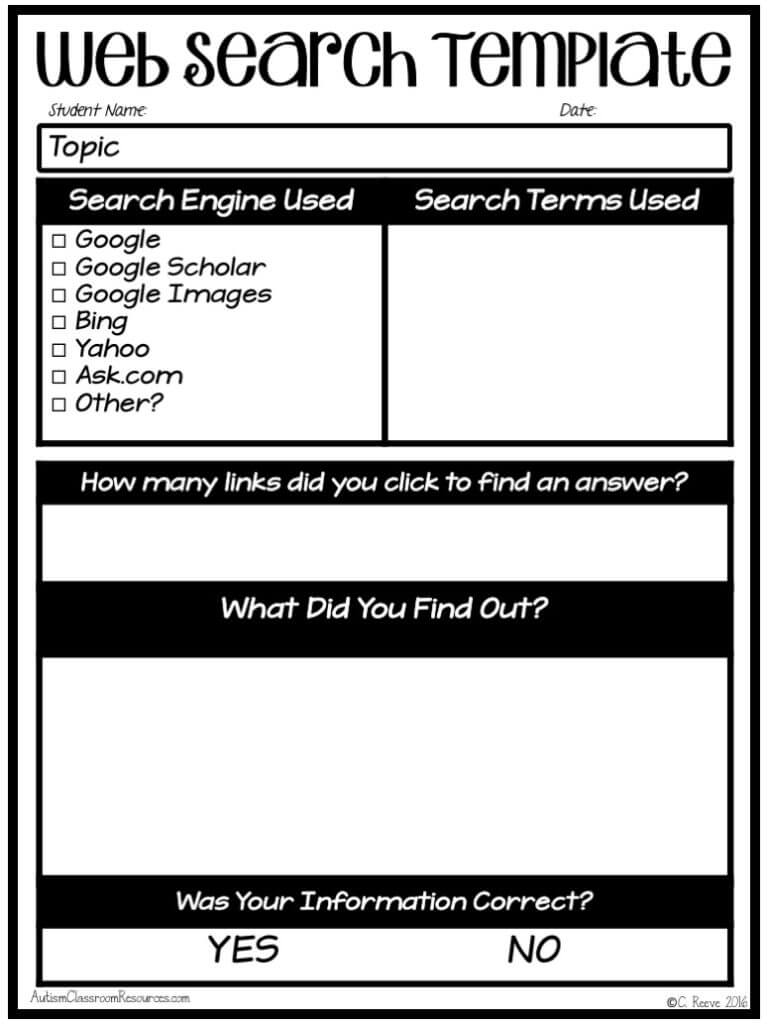 Web Searches
Web Searches
Some of the social studies standards focuses on civics including personal economics. Those standards are easy to put into practice in a functional curriculum and to create specific learning goals. We can teach it through shopping tasks and budgeting activities like debit card use. Things like history and government, however, are more difficult. For instance, we can teach who is president…but in 4 or 8 years that will change. We can teach about elections, but all types of elections are different. And of course some elements of history and government are pretty abstract. So, one solution is to take the standards (like finding the Civil War battlefields) and having students learn to use tools to research them. Teaching them how to responsibly use the internet, how to locate new information, and determine if it’s accurate is an important life skill. Let’s face it, that’s how this generation (and even our generation) is going to get most of their information from the web. Learning how to navigate it well is a functional skill you can put to use to investigate the election candidates, the laws in certain areas, different countries and and historical events.
To help with this, I made an example of a template for a student to complete to do a web search. It’s in PDF form to maintain the fonts but you can easily either use it or recreate it. You can download it here.
Scientific Method
Similarly understanding elements of physics is something that would be difficult for our students to understand. However, science experiments not only give us a hands-on way to teach science concepts, but they also teach them the specific skills students need to use the scientific method. And what is the scientific method? A problem-solving strategy. Making a hypothesis or a guess, testing strategies, and observing the results is part of solving a problem, scientific or not. You can also fold in essential and cognitive skills like following directions to complete the experiment, writing about their observations, etc. However, understanding the scientific method is a great way to evaluate questions about how things happen in the world. So, I’ve included a template for experiments you can use as well. It’s also in PDF but could be easily recreated for different uses. And I expect you’ll see it again tailored for specific science products and lesson plans coming to my store.
So I hope this gave you some thoughts when planning standards based instruction so that it can meet our state requirements when writing IEP goals that are meaningful for our students. If you are looking for materials to help your students learn science standards you might want to check out some of the materials below. Just click them to check them out in my store.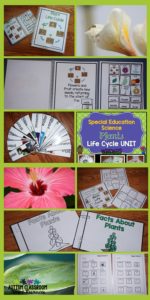
Until next time,
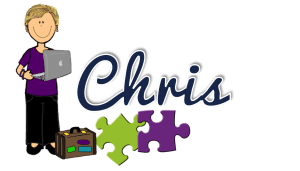

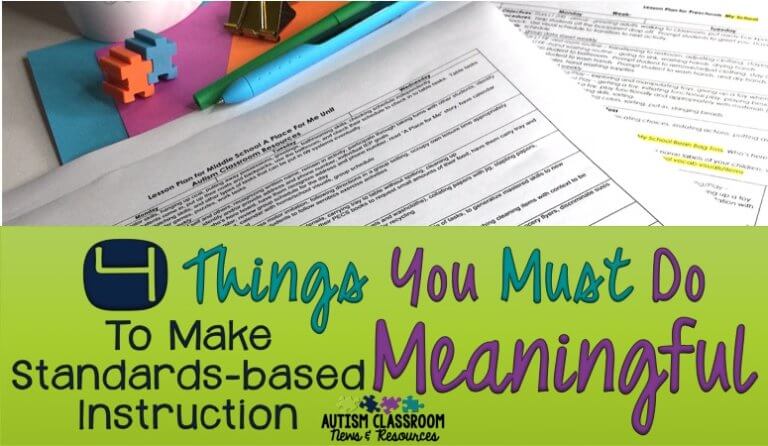
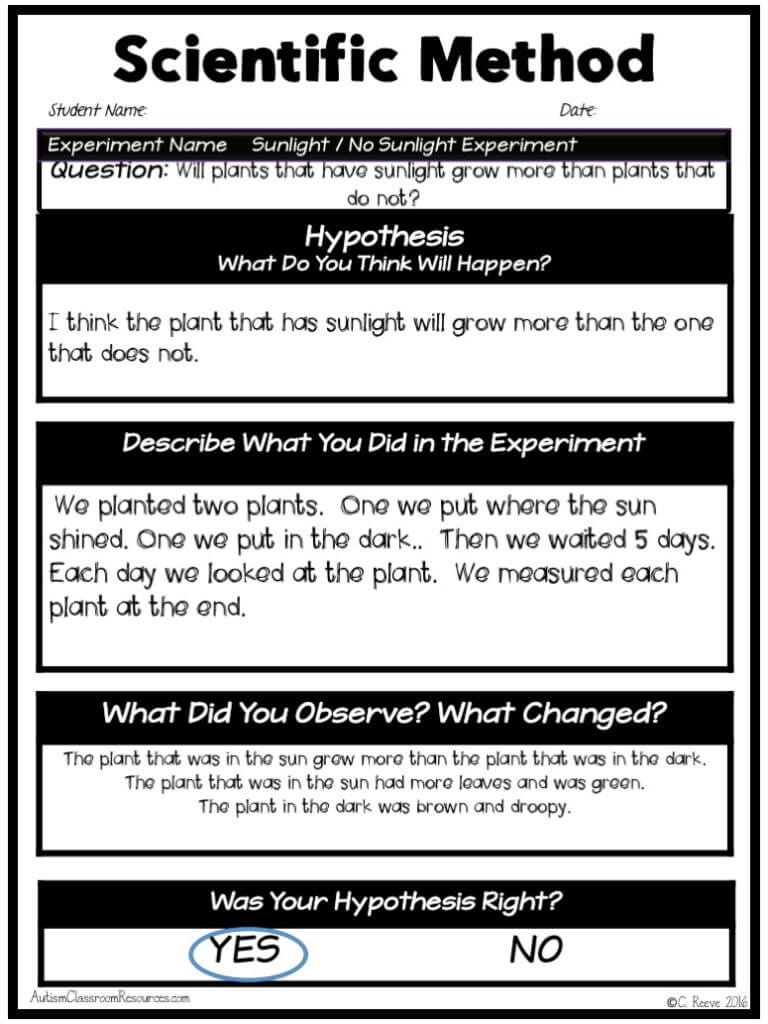

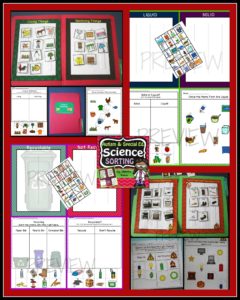

![Summer resources to help survive the end of the year in special education [picture-interactive books with summer themes]](https://autismclassroomresources.com/wp-content/uploads/2018/05/SUMMER-RESOURCES-ROUNDUP-FEATURE-8528-768x768.jpg)


